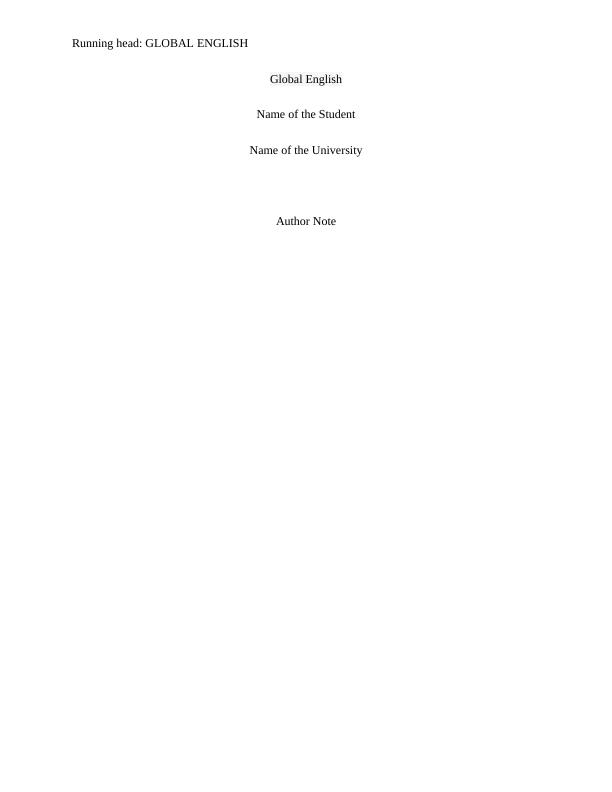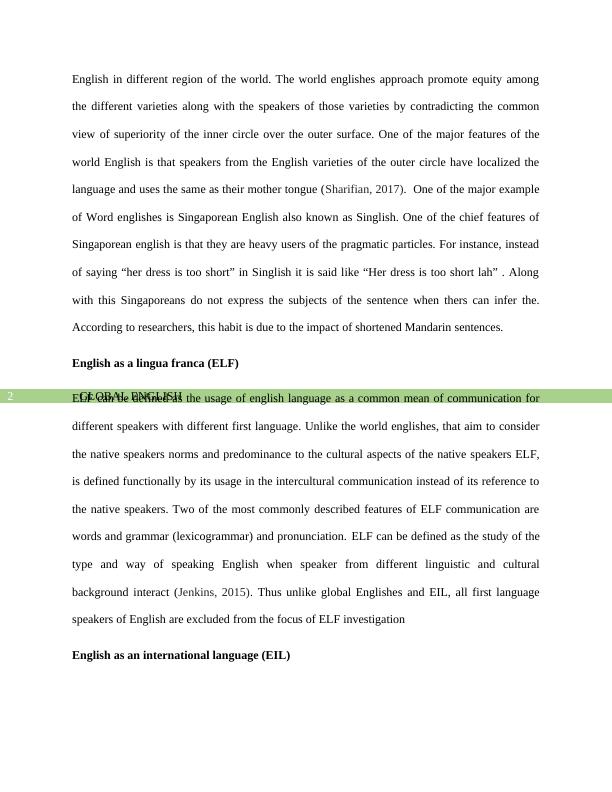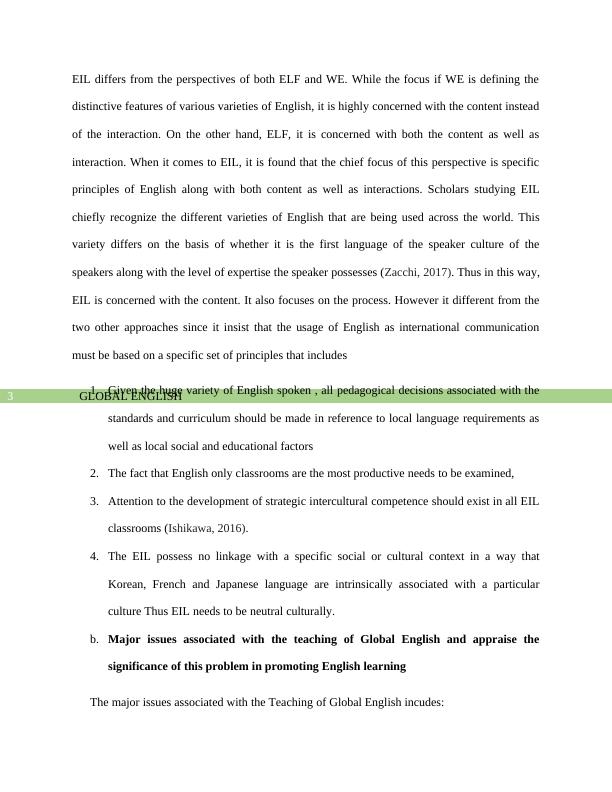General English as well as International English
Research the concept of Global English and the pedagogical implementation of promoting Global English in Singapore schools. Discuss and compare various approaches to Global English and critique major issues related to the teaching of Global English.
15 Pages4450 Words23 Views
Added on 2022-08-12
General English as well as International English
Research the concept of Global English and the pedagogical implementation of promoting Global English in Singapore schools. Discuss and compare various approaches to Global English and critique major issues related to the teaching of Global English.
Added on 2022-08-12
ShareRelated Documents
End of preview
Want to access all the pages? Upload your documents or become a member.
Englishes and Interpretations of Language, Culture and Identity Assignment
|14
|3841
|250
The Power of English Language and Swearing
|5
|972
|139
Challenges Faced by English Language Learners and Teachers in ESL Classrooms
|14
|3546
|249




